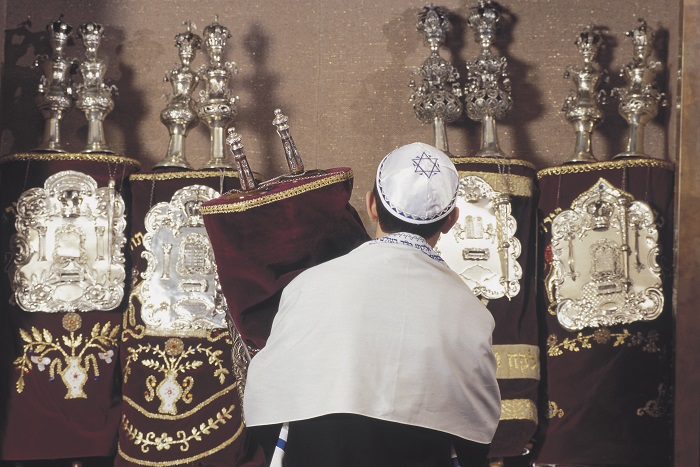
Cultures around the world celebrate rituals that honor children as they come of age, and Judaism is no exception. While many people may be familiar with the concept of becoming b’nai mitzvah, there is so much depth and history behind this ritual moment that many may be unfamiliar with. Read on to learn some history and basic concepts about becoming b’nai mitzvah.
This ceremony was originally created as a way to mark the transition from childhood to Jewish adulthood, and the obligations and responsibilities that came with it. At that time, only men were obligated to certain (commandments) so a Jewish boy would become (bar meaning “son” and mitzvah meaning “commandment”) at age 13, which was considered the age of maturity. B’nai mitzvah is the plural of bar mitzvah, used when multiple people become bar/bat/bet mitzvah. Since then, the concept of becoming a bar mitzvah and having a bar mitzvah ceremony has grown and evolved.
The term “” is the corresponding affirmation of Jewish adulthood for girls. The first-known celebration of a bat mitzvah in North America was that of Judith Kaplan, the daughter of prominent rabbi Mordecai Kaplan, in 1921. “Bat” means “daughter of” in Hebrew. B’not mitzvah is the feminine plural term, used when multiple girls or women become bat mitzvah.
In recent years, other terms have been introduced in Reform congregations to honor our modern understandings of gender identity. Because Hebrew is a binary-gendered language, for many who are coming of age in Jewish communities, the terms “bar mitzvah” or “bat mitzvah” do not resonate. For this reason, many communities now use a variety of non-gendered or all-gender terms: “b’nai mitzvah,” used as a singular they; “b’mitzvah,” an abbreviated form which also means “in/of commandment” in Hebrew; “bet mitzvah,” using the abbreviated letter “bet” in Hebrew; “brit mitzvah,” meaning “the covenant of commandment”; and many more.
Any term you use technically applies to the person, and not the event. One becomes b’nai/bar/bat/brit/bet mitzvah. It is common, however, to also use the term to describe the ceremony itself. Hence, you will hear many people say, “I’m having my bat mitzvah,” or “I’m going to their b’nai mitzvah next Shabbat.”
Most b’nai mitzvah ceremonies take place on Shabbat morning in the sanctuary of the synagogue. Some are also celebrated on Friday evenings. Some families choose to travel to Israel or other Jewish communities abroad for their b’nai mitzvah ceremonies.
Most students work with congregational clergy, religious school teachers, and Hebrew tutors to fully prepare for any part of the service for which they will be responsible. Most b’nai mitzvah students begin preparing several years in advance for their service.
The b’nai mitzvah ceremony is not a performance. It is a chance for the person becoming b’nai mitzvah to use what they have learned to formally take their place as a teacher and leader within the community and among the Jewish people.
Depending on the congregation, the b’nai mitzvah may lead all or part of the worship service, read or chant the blessings over the Torah (called an ), chant a section from the Torah portion for that week, recite the blessings, read a section from the haftarah, and/or deliver a brief sermon.
There are many opportunities for family members and close friends to participate in the service and it is considered an honor to be invited to do so. Opportunities for participation, often called “honors,” vary from congregation to congregation. Family members and close friends of all backgrounds and faiths are often asked to participate in the service. One of the greatest gifts you can give to someone becoming b’nai mitzvah is fully participating in the service. Attendees of any faith or cultural background are welcome to sing along to prayers, read English readings, and learn from the b’nai mitzvah student’s teachings.
Becoming a b’nai mitzvah is a once-in-a-lifetime experience and represents a symbolic entryway into greater learning in the adult Jewish community. It is a time of beginning a new stage in one’s Jewish life and was never intended to be an end to education or involvement – it’s rather meant to celebrate the beginning of one’s adult Jewish journey. There are many ways to not only stay involved, but also to take on new leadership opportunities after becoming b’nai mitzvah.
Explore Jewish Life and Get Inspired
Subscribe for Emails
